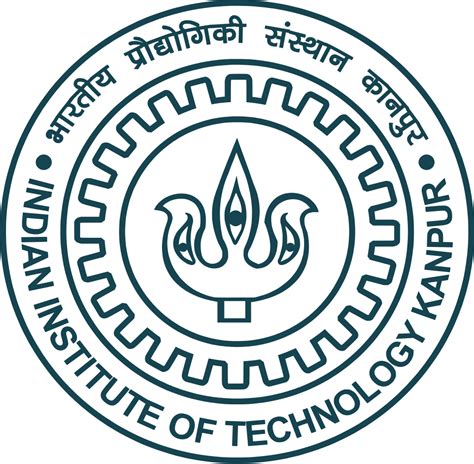
Education / Work History
- Ph.D., IISc Bangalore
- M.Tech, Center for Lasers and Photonics (CELP), IIT Kanpur (2017-2019)
- B.Tech, Rajasthan Technical University (2009-2013)
Thesis Abstract
Research Topic / Interest
Contact me to know my current interests.
Publications
These include only those published in our lab.
-
Comparative Study of the Real-Time Optical Trapping in the Rayleigh Regime for Continuous and Pulsed Lasers.
S. N. Bandyopadhyay, T. Gaur, and D. Goswami, (2020)
[Abstract]
[PDF]
[BibTeX]
Abstract: Simulating real-time scenarios to predict optical trapping behavior for continuous wave (CW) as well as femtosecond pulsed lasers is a challenging problem. This is especially so, because, for a tightly focused laser, one must also include optical Kerr effect as well as thermal nonlinearity. We show here the distinct differences between CW and femtosecond pulsed laser mediated optical trapping via their effect in scattering and gradient forces in the Rayleigh regime. In our newly developed model, it will also be easier to predict the stability of the trap in real optical trapping scenario as well as provide information regarding choice of solvents, probes, and optical parameters like laser type, power range, wavelength, etc. as may the cases be.
BibTeX: @unpublished{bandyopadhyayComparativeStudyRealtime2020, title = {Comparative Study of the Real-Time Optical Trapping in the {{Rayleigh}} Regime for Continuous and Pulsed Lasers}, author = {Bandyopadhyay, Soumendra Nath and Gaur, Tushar and Goswami, Debabrata}, date = {2020-02-01}, eprint = {2002.00227}, eprinttype = {arxiv}, eprintclass = {physics}, url = {http://arxiv.org/abs/2002.00227}, urldate = {2020-02-06} } -
Manifesting the Effects of Thermal Nonlinearity in Optical Trapping for Rayleigh Regime.
T. Gaur, S. N. Bandyopadhyay, and D. Goswami, in 2019 URSI Asia-Pacific Radio Science Conference (AP-RASC) (IEEE, 2019), pp. 1–5
[Abstract]
[PDF]
[BibTeX]
Abstract: Since long the thermal effects have not been much explored in the optical trapping theory, in this paper, we are establishing the effects of optically induced thermal nonlinearity in the medium of optical trapping in the Rayleigh regime for both continuous wave and a pulsed laser. For a single beam, optical tweezers with high numerical aperture (N.A.) objectives are used as a routine. In such a tight focusing scenario, both optical nonlinearity and thermal effects may prevail in the cases of continuous wave (C.W.) and pulsed laser-mediated optical trapping events. In this paper we will introduce the effects sequentially, starting from optical nonlinearity and methods to implement this effect and subsequently introduce the thermal nonlinearity in the medium. The effects are significantly different when compared between CW and pulsed optical tweezers and will be discussed in detail in this paper.
BibTeX: @inproceedings{gaurManifestingEffectsThermal2019, title = {Manifesting the {{Effects}} of {{Thermal Nonlinearity}} in {{Optical Trapping}} for {{Rayleigh Regime}}}, booktitle = {2019 {{URSI Asia-Pacific Radio Science Conference}} ({{AP-RASC}})}, author = {Gaur, Tushar and Bandyopadhyay, Soumendra Nath and Goswami, Debabrata}, date = {2019-03}, pages = {1--5}, publisher = {{IEEE}}, location = {{New Delhi, India}}, doi = {10/gf5mqf}, url = {https://my.pcloud.com/publink/show?code=XZqaxr7ZmnVNxAn4Y4mRbGS3d4A7FjmCWEv7}, urldate = {2019-08-01}, eventtitle = {2019 {{URSI Asia-Pacific Radio Science Conference}} ({{AP-RASC}})}, isbn = {978-90-825987-5-9} } -
Manifesting the Effects of Thermal Nonlinearity in Optical Trapping for Rayleigh Regime.
T. Gaur, S. N. Bandyopadhyay, and D. Goswami, in 2019 URSI Asia-Pacific Radio Science Conference (AP-RASC) (IEEE, 2019), pp. 1–5
[Abstract]
[PDF]
[BibTeX]
Abstract: Since long the thermal effects have not been much explored in the optical trapping theory, in this paper, we are establishing the effects of optically induced thermal nonlinearity in the medium of optical trapping in the Rayleigh regime for both continuous wave and a pulsed laser. For a single beam, optical tweezers with high numerical aperture (N.A.) objectives are used as a routine. In such a tight focusing scenario, both optical nonlinearity and thermal effects may prevail in the cases of continuous wave (C.W.) and pulsed laser-mediated optical trapping events. In this paper we will introduce the effects sequentially, starting from optical nonlinearity and methods to implement this effect and subsequently introduce the thermal nonlinearity in the medium. The effects are significantly different when compared between CW and pulsed optical tweezers and will be discussed in detail in this paper.
BibTeX: @inproceedings{gaurManifestingEffectsThermal2020, langid = {english}, location = {{New Delhi, India}}, title = {Manifesting the {{Effects}} of {{Thermal Nonlinearity}} in {{Optical Trapping}} for {{Rayleigh Regime}}}, isbn = {978-90-825987-5-9}, url = {https://my.pcloud.com/publink/show?code=XZqaxr7ZmnVNxAn4Y4mRbGS3d4A7FjmCWEv7}, doi = {10/gf5mqf}, eventtitle = {2019 {{URSI Asia}}-{{Pacific Radio Science Conference}} ({{AP}}-{{RASC}})}, booktitle = {2019 {{URSI Asia}}-{{Pacific Radio Science Conference}} ({{AP}}-{{RASC}})}, publisher = {{IEEE}}, urldate = {2019-08-01}, date = {2019-03}, pages = {1-5}, author = {Gaur, Tushar and Bandyopadhyay, Soumendra Nath and Goswami, Debabrata} }
